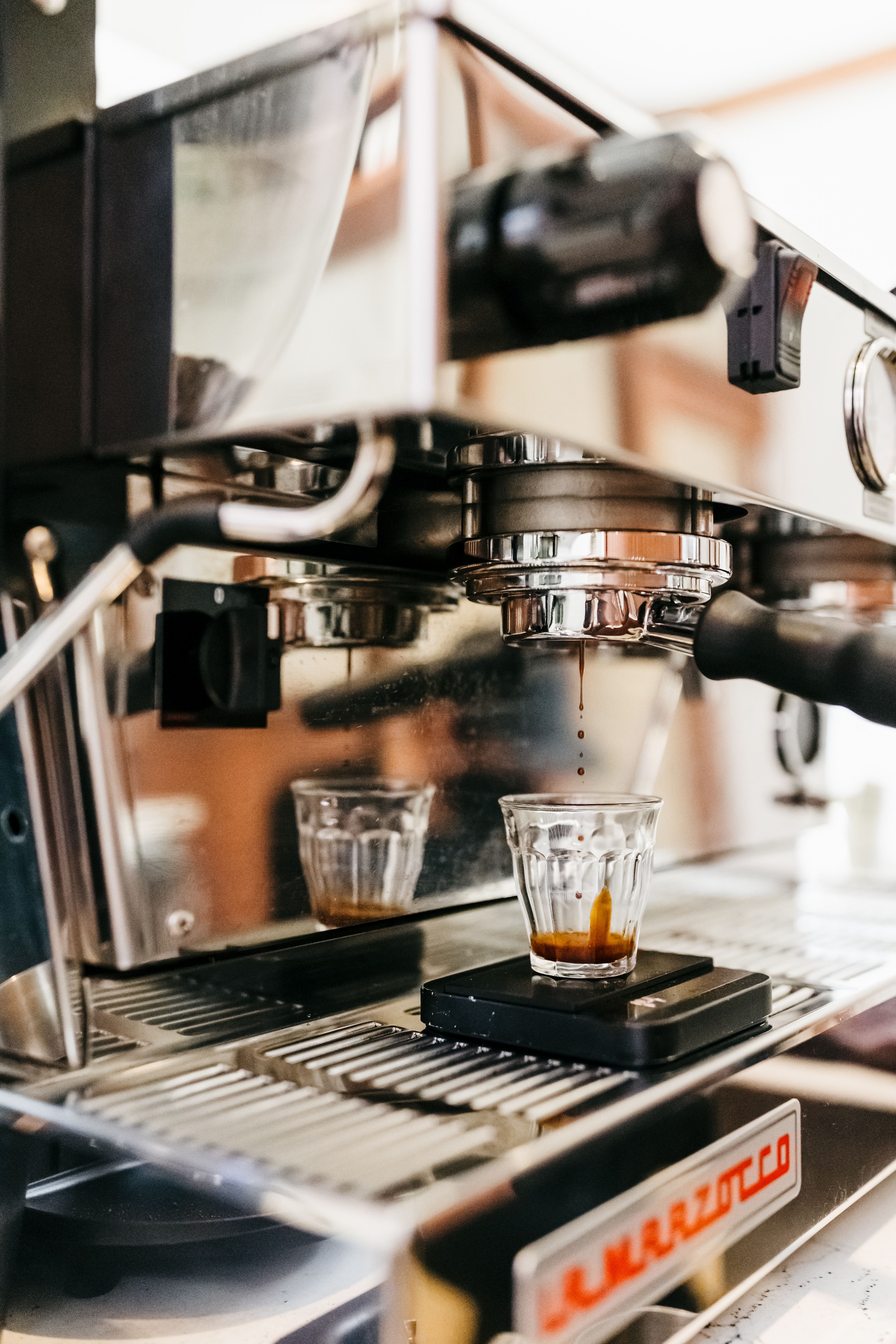Espresso
A guide to dialing in your perfect espresso

When preparing espresso, it is important to remember that every coffee will extract differently– and even the same coffee can change as it rests and degasses CO2. Given these considerations, we recommend focusing first on adjusting fewer variables which result in a more predictable outcome.
We suggest maintaining the following constants for almost every coffee on our menu:
208°F • 7 bars pressure • 19g coffee
We’ve found that a hotter brew temperature and lower pressure work best with our coffees. These settings allow for a more gentle extraction, offering a wider “sweet spot” while minimizing the risk of an unpleasant sour aftertaste.
Choosing a Dose
In general, it’s best to choose a consistent dose and stick with it. Your portafilter basket will guide your choice. Each is designed with a specific dose in mind, typically with a 1g variance. For example, we prefer using VST 20g baskets due to their precision filter screens and straight walls. We find that dosing 19g of coffee in these baskets provides a sufficient puck depth for distribution and extraction. This serves as our starting point for all coffees.
Factors to actively change:
Yield (Final Beverage Weight)
Yield directly affects the body and mouthfeel of your espresso. Before pulling a shot, ask yourself: “What is the coffee’s flavor profile, and how do I want it to feel in terms of texture?”
- If you’re working with a rich, cocoa-forward Peruvian coffee, a lower yield can enhance its syrupy, full-bodied character.
- On the other hand, a Colombian coffee with bright, complex fruit notes might shine with a higher yield, resulting in a thinner, juicier espresso where no single note dominates.
Grind Size and Contact Time
Contact time refers to the duration from when water first hits the coffee puck to when the final beverage reaches its target weight. While yield does play a factor in this, for our purposes we will primarily influence contact time using grind size:
- If the espresso tastes overly acidic and lacks sweetness, grind finer to increase contact time and extraction.
- If it tastes too bitter and dry, grind coarser to reduce contact time and extraction.
A little goes a long way when adjusting grind size so slowly inch up on that sweet spot by trial and error. Likewise, tweak one variable at a time. Adjusting both grind size and yield simultaneously makes it difficult to identify what went right, or wrong.
Over time, we’ve identified two recipe styles that work well with many of our coffees:
For deeply sweet, indulgent espressos:
Constants: 208°F • 7 bars pressure • 19g coffee
Yield: 39-42g
Contact Time: 35 - 50 seconds
For bright, lively, and immensely juicy espressos:
Constants: 208°F • 7 bars pressure • 19g coffee
Yield: 47-51g
Contact Time: 25 - 40 seconds
Use these recipes as a starting point, but do not forget that every coffee is different, there is no single correct answer. Always taste with intention and trust your palate over numbers.